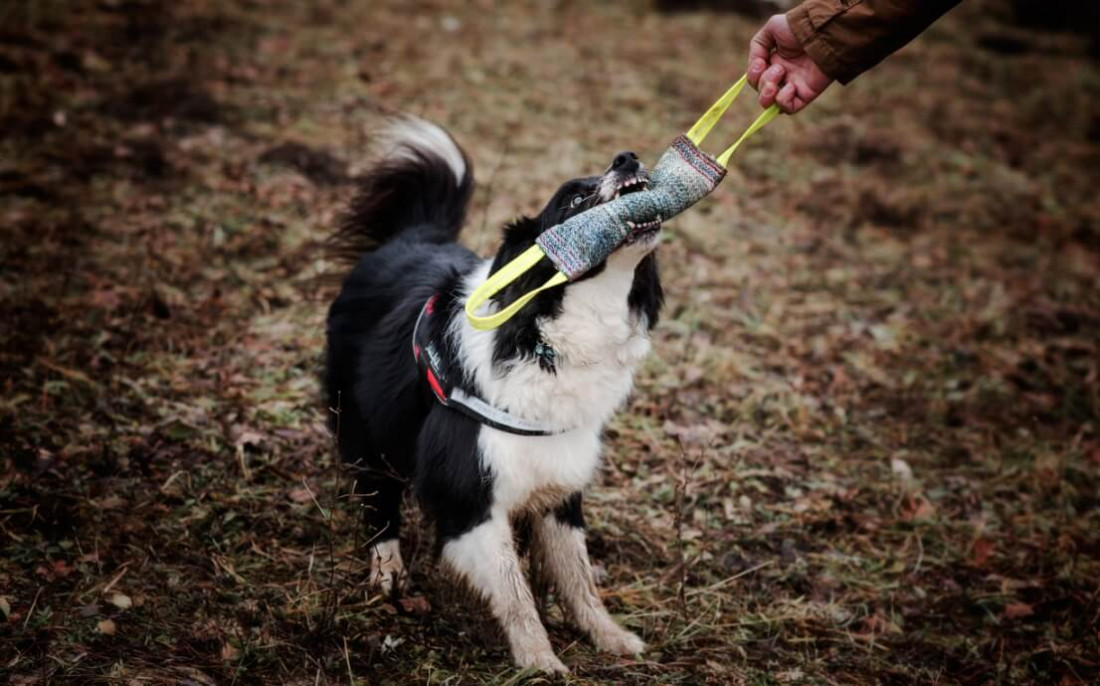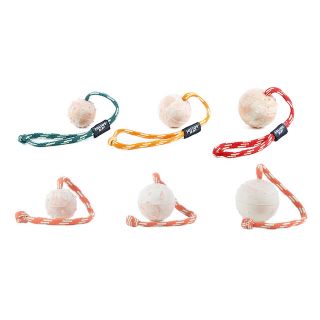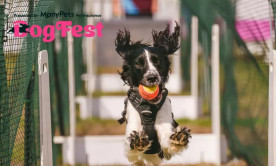Playing tug of war with your dog has many benefits including helping you bond with your pet, hone their natural instincts, works as great training tool, and is an excellent source of exercise.
When used properly, tug toys are perfectly safe for puppies and dogs of any age. However, like any physical activity done with your dog, you should understand basic dos and don’ts to ensure you and your pet’s safety.
We have several safety tips below, but the most important one to remember is that you should always let your dog guide games of tug of war – never exert more pulling force than your dog gives!
Tug games and aggression
There has been some misinformation that games like tug of war promote bad behaviour and aggression in dogs, but this is not true. In fact these types of games can be a great training tool.
However, any type of physical game can cause already poorly behaved dogs to act out even further. Therefore it’s not recommended that you play tug games with dogs where obedience and impulse control is already an issue.
Why tug of war is important
Dog’s love tug games as it taps into their natural predatory nature. When played correctly, tug of war is a high-value training method. It improves their impulse control, lets them learn boundaries, is an excellent mental stimulate, and is of course a great way to tire them out.
When played responsibly, tug games also help keep your dog’s teeth and muscles strong.
How to play tug of war safely
Be gentle: You should always use tug toys with caution in mind – don’t hank or widely swing the tug around when your dog has locked its teeth onto it. You should never pull harder than your dog is pulling.
Puppies: You should use even more caution when playing with puppies so be extra gentle. A puppy’s teeth and jaw is still developing and you can cause serious harm if you don’t play responsibly.
Move the tug side to side: Your dog’s movements and force should always guide the game. Naturally, they will move the tug side to side, and you should follow their lead. Always keep the game gentle, and do not jolt the tug up and down – this is a non-natural movement for the dog can cause stress to their neck and spine.
Let your dog win: By letting your dog “win” during tug sessions is not letting them assert dominance over you. Instead you are actively engaging with them and giving them the chance to share “their property”. This is an important part of the bonding process and helps establish boundaries as the dog has chosen to bring the toy back to you.
Initiate the game - not your dog: You should always be the one who starts the tug game as this puts you in control. When the tug toy is not in use, make sure you store it where the dog can’t get it. This is doubly important if you have more than one dog - you don’t want them starting a game with each other!
Only use one tug tog: Only have one tug toy and use it every time you play. This creates a boundary of what is a toy and what isn’t, helping prevent your dog from trying to play tug with things they find, such as shoes, clothes or cushions.
‘Drop it’ command: Like any sort of activity with your dog, they should be able to obey basic commands first. This is for the safety of you, your dog, and others. If your dog is able to drop when told then you are able to de-escalate the game if it’s getting out of hand. By getting your dog to drop the tug during an active play session is also a great training tool for when you need them to drop an item they are excited about.
Tug time: You should let your dog pull on the tug for between 10 to 20 seconds for each session.
Safe environment: Be aware of your surroundings before you start playing. Make sure there is plenty of space so you or your dog can’t bump into anything. Consider the flooring as well. Wood or tile floors can be slippery and during a vigorous game of tug accidents can happen, so you might want to play outdoors or on carpet.
Handles on tug toys: Some dedicated tug toys have handles. These are for you - not your dog! The main bite pad has been designed to for gripping and biting, so please use it as intended.
Quality equipment: Only use high quality toys that are durable and are intended for the task. Dedicated dog toys like tugs and bite pads are made to be robust and withstand the strain of the force dogs can exert during tug of war. Poorly made equipment can be dangerous.
Here at JULIUS-K9®UK we only stock dog toys that are made to last and have been thoroughly tested to ensure they offer the best quality and safety. Browse our range of tug toys here.
Types of tug toy
Tugs are normally available in three materials, all with their different benefits:
- Leather: leather tugs are the popular choice of professional handlers as they are extremely robust, suitable for use outdoors in a range of weather conditions, and dog’s love the natural smell and texture.
- Cotton& Nylon: cotton and nylon blend tugs have a slight non-grip surface which encourages dog’s to bite harder. JULIUS-K9® cotton/nylon tugs have tough, bite-proof, inner material used by mattress manufactures making them highly durable.
- Jute: the rough and textured surface of jute makes it the ideal material for a tug toy. It’s extremely sturdy and so is suitable for more developed bite training. Here at JULIUS-K9® we use heavy duty jute tugs which are reinforced with nylon.
Bite pads
Bit pads - like the ones we sell on here - can also be used for tug games. But just like regular tugs remember that the hold handles are for you and not your dog. Dogs should always be biting down on the main bite pad. This is for their own safety and comfort.









